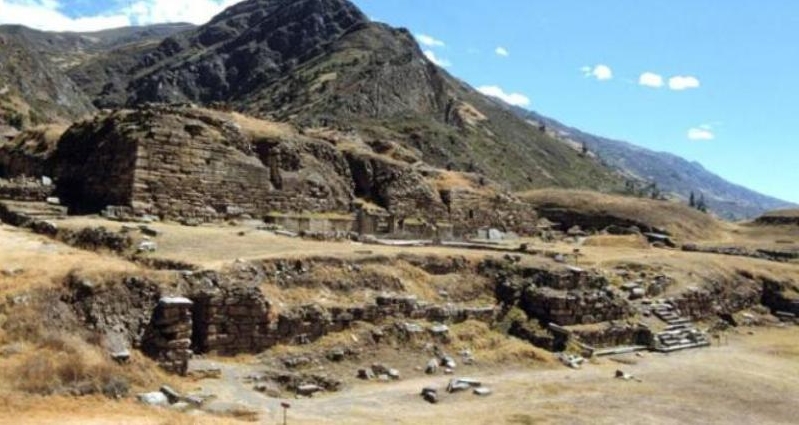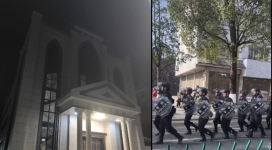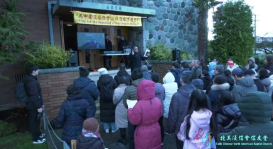
Archaeologists discovered a 5,000-year-old temple in the Andean Highlands of Peru that implies religion already was a highly sophisticated and organized institution for the natives of that time. This former place of worship is one of the earliest and best-known pre-Columbian sites. While many people think ancient religions were more open and less institutional, the findings at this site suggest the opposite.
Inscriptions suggest that this complex was open to only the elite members of society, people from lower strata would feel a deep sense of spiritual "unworthiness," which made them vulnerable to exploitation.
Experts propose this site also could be the place where humanity first discovered the powers of organized religion, according to World Religion News.
Chavin de Huantar lies in a narrow valley in the high Andes, 10,500 feet above sea level. The temple can't be seen until one is in it. The dramatic, vertical landscape is assumed to be a carefully chosen location due to its architecture. The bottom of the valley, where two rivers meet, dominates the flat land around it, and would have attracted visitors from miles around, reports BBC.
The complex is not really a structure, but a labyrinth of subterranean mazes and tunnels that boast of very highly refined and sophisticated level of scientific knowledge and advancement. Built purposely at a dangerous spot where chances of flooding were very frequent, some people now believe the complex was intended to remind pilgrims that the forces of nature or the gods were far superior to the power of man.
Inside the temple is where many believe the system started of having powerful intermediaries, the priests, who would stand between the almighty gods and the powerless human beings. Exposed granite stonework is adorned with art. The structure has been built with an excellent use of sound effects, hydraulics, light effects, mirrors and other such executions are too phenomenal for those times. Naturally, as the priests could use these factors to create surreal effects, the people would feel that these are magical occurrences happening through the divine powers of the priests.
The temple, now protected as a UNESCO World Heritage Site, is thought to have first been occupied around 5,000 years ago, becoming a cultural center for people living in ancient Peru in about 1,000 BC.
"Chavin was built in a risky spot, in a highly flood-prone location," said John Rick, associate professor of anthropology, Stanford. "They were aware of the risk of floods and they built towards these risks and not away from them. The monumentality was not only to impress visitors but also to tell them that the creators were capable of challenging nature successfully. And they did very well with it."
Lost in a labyrinth of underground tunnels lit by sunlight, adorned with stone carvings that appear to roar and brushed by water that rushed up to meet them, visitors would have been completely disoriented by the experience. "It was a convincing system," said Rick.
"And it pushed the innovation of advanced technology. They were using hydraulics, acoustics, mirrors, psychoactive drugs. They made water dance and sing by its motion through canals. The creators of the temple were pushing their scientific understanding forwards. This is a way of showing off but in a very serious - cultic - sense."
Evidence, in the form of objects found on-site, indicates visitors came to the temple from as far away as 310 miles, "which at the time would be an extraordinary distance to travel," said Rick. "This leads us to think the people that came here were important figures. This was a cult for the secondary elite who were now emerging and for whom Chavin fit very well in their world view."
Rick thinks there were eight to 20 major cult centers in the central Andes competing with each other for followers.
"The things that were built into the site to make it impressive then, still are impressive now. When we walk into the site to excavate, the feelings of awe and privilege and fascination is not purely of our own invention. We're still getting the message from these priests 3,000 years ago," shared Rick. "It emphasizes common ideas. We're not different from humans 3,000 years ago. When you put something in the ground or on the ground, the ceremonies keep going on. Just not in ways they could ever have dreamed of."







